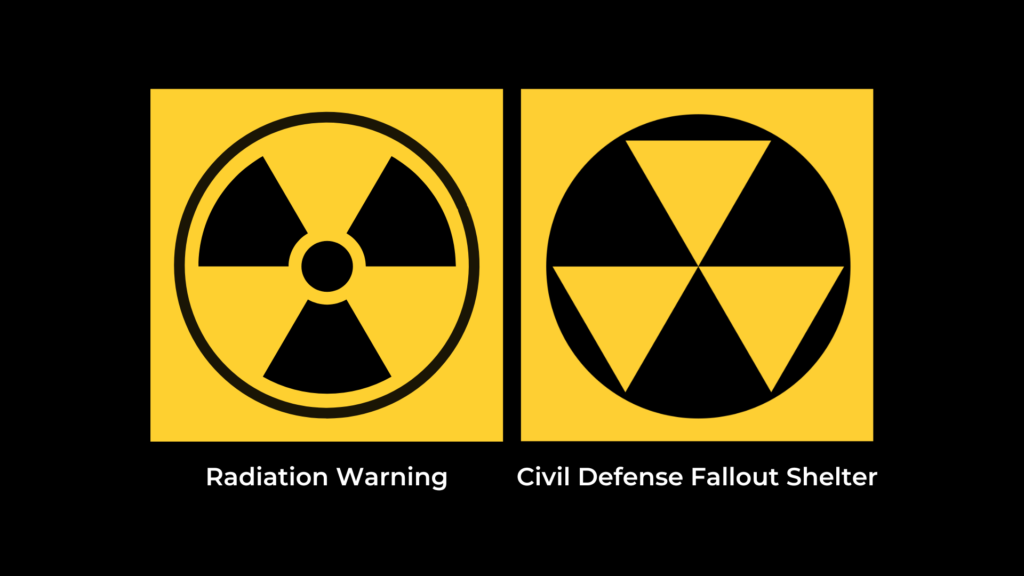Representing activity radiating from an atom – that’s how Nels Garden described the “doodle” of the radiation warning symbol. It was first conceptualised sometime in 1946 at the University of California Radiation Laboratory at Berkeley.
Nels Garden was the head of the Health Chemistry Group who suggested different motifs before arriving at this one.
As you can see below, it is quite similar to the Fallout Shelter symbol except for the central circle. The Office of Civil Defense was supposed to use the radiation warning symbol in fallout shelters but the idea was rejected because it represents a hazard rather than safety.

The Trefoil Symbol
The trefoil – a three-bladed radiation warning symbol – wasn’t originally black and yellow. In 1948 it was considered for wider use but its first print was a magenta symbol on a blue background. The magenta shade was Martin Senour Roman Violet No. 2225 because it was “distinctive and did not conflict with any color code that we were familiar with” (Garden, 1948). It was also expensive, making it unlikely to be used by others. The blue background, on the other hand, was uncommon in radiation controlled areas.


Later that year, however, the Oak Ridge National Laboratory replaced and standardised it with a yellow background. Most workers thought that blue didn’t fit warning signs and it faded outdoors.
This pink on yellow symbol is used until today. Outside of the US, black blades on yellow is the most common combination.
Supplementary Radiation Warning Symbols
In 2007, the International Atomic Energy Agency (IAEA) and the International Organization for Standardization (ISO) launched a supplementary symbol for radiation dangers. It has radiation waves, a skull and crossbones and a running person.

It aims to alert anyone anywhere to potential dangers from a large source of ionising radiation. This symbol, developed by human factor and radiation experts, will reduce accidental exposure.
Real-Time Radiation Monitoring Devices
Radiation invisibility requires putting up helpful radiation signages as well as constant monitoring. Be it in the workplace with occupational exposure or in transporting radioactive materials from power plants, safety always comes first!
Looking for area radiation monitors or personal radiation monitoring devices? You can count on SensaWeb. With our monitors, you can easily detect and interdict radioactive materials. Connect with us here or at our email address: info@sensaweb.com.au. You can also call us at +61 415 409 467.